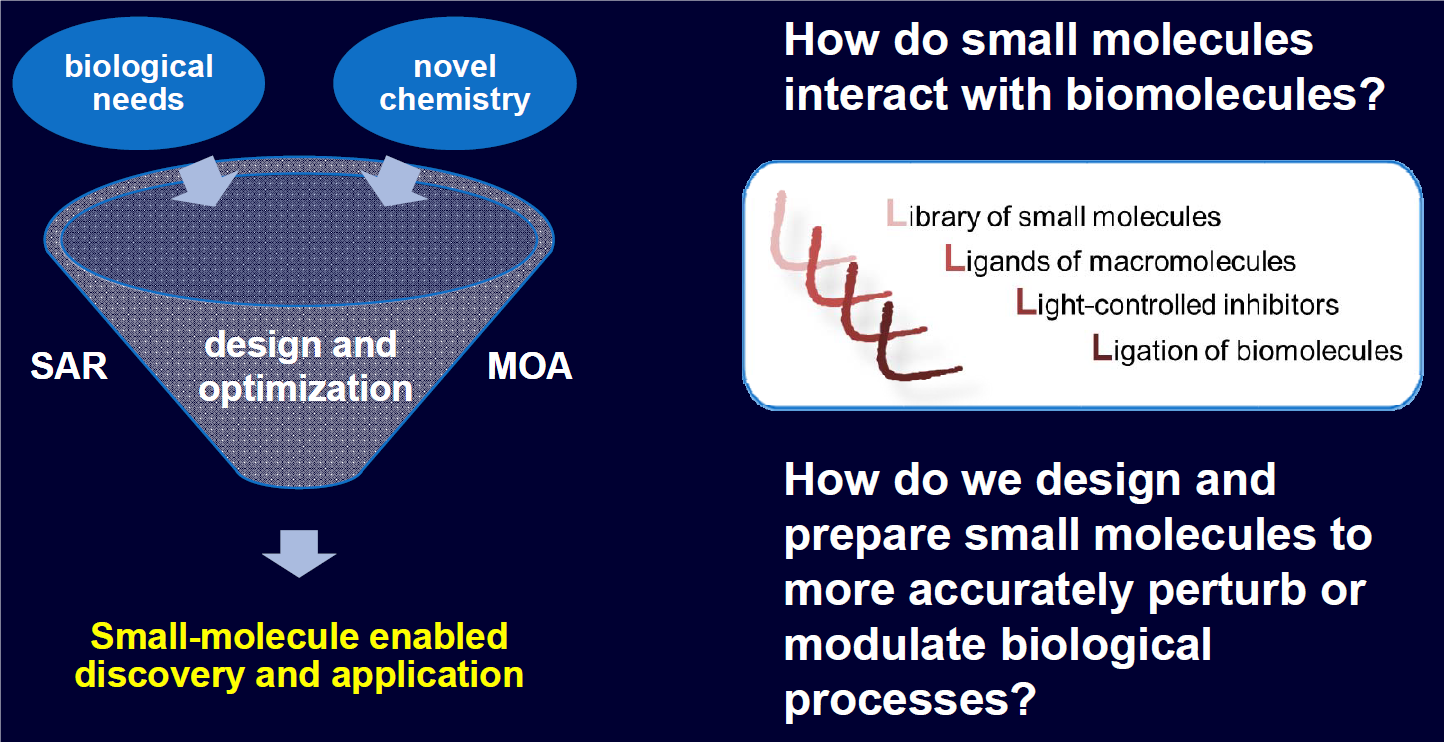Research

Our group focuses on areas of organic chemistry and chemical biology in order to provide useful small molecules and tools to facilitate the researches in life sciences. For every biologically active small molecule, there are two basic scientific questions we are trying to address. Focus 1: why is the molecule biologically active (mechanism-of-action) and what is the structure-activity relationship? Focus 2: based on our understanding of the first aspect, how could we design and prepare small molecules that better suit our needs? By taking full advantage of the state-of-the-art synthetic organic chemistry and chemical biology technologies, we are working on a wide range of projects, including:
- Anti-cancer compounds of clinical value with identified mechanism of action; potent cytotoxic natural products with high selectivity against genetically defined cancer cells
- Promising antimicrobial natural products without elucidated mechanism of action; clinically used antibiotics
- Small-molecule modulators of various ion channels pertaining to the neurological system and pain
- Small-molecule natural products with strong anti-inflammatory activity, especially those without an elucidated mechanism-of-action
- Compounds regulating cell fate with potential application in regenerative medicine, such as in the area of differentiation and reprogramming, especially the generation of chemically induced pluripotent stem cells
- Small molecules that could selectively eliminated senescent cells (also termed “senolytics”)
- Pheromones and quorum sensing molecules important for intra- or inter-species chemical communication; hormones and primary metabolites important for delivering signals between different organs and tissues

De novo syntheses of complex small molecules, especially natural products, not only provide sufficient quantities of compounds that suffer from problems of purification or abundance, but also endow us the unique ability to accurately modify the targeted chemotypes. Based on the recognition and analysis of structural features of our target molecules, we aim to develop unified strategies or novel cascade reactions by harnessing reactive intermediates to enable efficient synthesis and exploration of the associated chemical biology. Paradoxically, we are keen on using overbred intermediates—intermediates that are structurally more complex than the target, with one or more excess C‒C bonds cleaved in subsequent transformations, to simplify the synthetic routes, which often involve the rearrangement and fragmentation of molecular skeletons at a later stage. Most recently, we have become increasingly interested in the application of the excited-state chemistry, either for advancing synthetic methodologies, or addressing challenging issues in total synthesis. Eventually, factors of efficiency, modularity, robustness and scalability are considered and balanced in our work, with the goal towards the practical syntheses that make molecules with desired properties to advance knowledge and improve human life by outreaching other scientific disciplines.

We are also particularly interested in organic reactions that could take place in live cells. The in vivo chemistry could be implemented in developing small-molecule probes that is turned “on” or “off“ by certain means, such as light of a particular wavelength. These activatable small-molecule probes would allow us to precisely manipulate biological system with exceptional temporal and spatial resolution. On the other hand, we work on the design and syntheses of compounds that specifically react with the endogenous amino acid residues under physiological conditions to interrogate the protein of interest from a new angle.
Tailored according to the specific needs in different biology fields, our projects focus upon the investigation and utilization of the interaction of small molecules and biomolecules, in which the innovations in chemistry would play a vital role.
